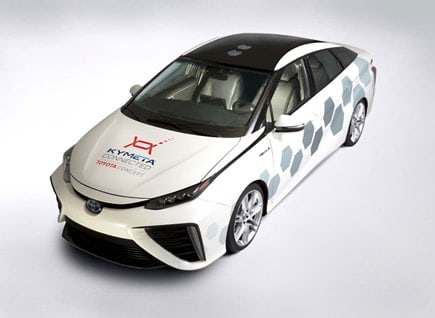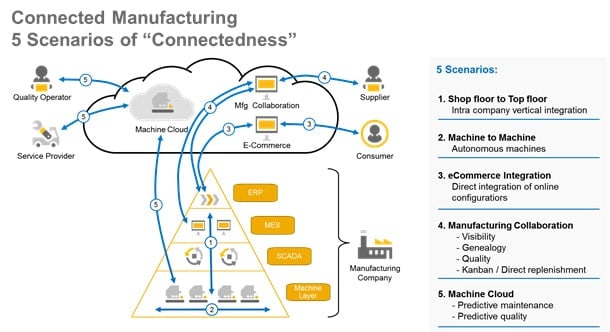Having lost one battle in the 3400-3600 MHz satellite band, the IMT proponents were favourably greeted with a new agenda item for WRC-19 to identify high-frequency bands above 24 GHz for IMT/5G services.
Nevertheless, in favour of the satellite industry, the Conference decided that the C, Ku and Ka-bands currently allocated to the fixed satellite service (FSS), mobile-satellite service (MSS) and broadcast-satellite service (BSS) should not be considered in the studies.
However, the satellite industry cannot rest on its laurels and has to stay alert to any possible recommendations for allocation of IMT in the FSS Ka-band (27-30 GHz). This refers to one country’s decision to introduce 5G IMT to some portions (27.5-28.35 GHz) of the FSS Ka-band on its domestic allocation. It should be noted that this is only possible since the FSS is on secondary allocation to the terrestrial services in that country, whereas the specific portion of the Ka-band is allocated to FSS and the terrestrial services on a co-primary basis internationally.
While new technologies such as beam forming, beam hopping, digital channelizers and High Throughput Satellite ( HTS) will significantly improve the more efficient use of the spectrum, it has been suggested thatimproved bandwidth economics will open up new applications that will increase the demand for capacity to sustain the financial health of the operators. But so far, there is little evidence to suggest whether this will happen. The only new market that has evolved in recent years is the airline connectivity market, and it is being chased aggressively by nearly every large satellite fleet operator in the world.
The next conference also focuses on some works relating to the non-geostationary (non-GSO) systems. Considering the need to encourage development and implementation of new technologies in the FSS, WRC-19 will consider technical, operational issues and regulatory provisions for non-GSO FSS satellite systems in the 37.5-39.5 GHz (space-to-Earth), 39.5-42.5 GHz (space-to-Earth), and 47.2-50.2 GHz and 50.4-51.4 GHz (Earth-to-space) frequency bands. At the same time, the Conference will also study technical and operational issues and regulatory provisions for new non-GSO systems in the 3 700-4 200 MHz, 4 500-4 800 MHz, 5 925-6 425 MHz and 6 725-7 025 MHz frequency bands allocated to the FSS to protect the GSO FSS networks. These agenda items are another focus of the satellite industry to ensure that the non-GSO systems sufficiently protect the GSO FSS, MSS and BSS networks.
Another critical issue is undoubtedly the approval of the agenda to study the technical and operational characteristics for Earth Station In Motion (ESIM) that operate within geostationary FSS frequency bands, which definitely requires the satellite industry to continue its caution at WRC-19 to ensure that the FSS is sufficiently protected and no undue constraints are placed on existing and future FSS services..
In the meantime, recognising the growth of the satellite industry in the past decade and the expectations that it will continue in the next decade, the future Conferences will study spectrum needs and possible allocation to FSS in the band 51.4-52.4 GHz for the next WRC-19, and in the band 37.5- 39.5 GHz for the following WRC-23. The active participation of satellite industries
in ITU-R study groups dealing with FSS, GSO, non-GSO and IMT, WRC-19 agenda items – and in debates such as this on Exploring collaborative opportunities for spectrum use in the Forum at ITU Telecom World 2017 this November – is highly recommended.








 As the Director of The Open Group Trusted Technology Forum I am thrilled to be participating at ITU Telecom World 2016 in Bangkok, Thailand. In particular, I will be on a panel of subject matter experts to discuss the challenge of securing business enterprises and critical infrastructures and the potential steps that can be taken now to address these challenges – steps that can start us down the path of, as the ITU Telecom conference theme notes, “Better Sooner”.
As the Director of The Open Group Trusted Technology Forum I am thrilled to be participating at ITU Telecom World 2016 in Bangkok, Thailand. In particular, I will be on a panel of subject matter experts to discuss the challenge of securing business enterprises and critical infrastructures and the potential steps that can be taken now to address these challenges – steps that can start us down the path of, as the ITU Telecom conference theme notes, “Better Sooner”.
 Artificial intelligence announcements are happening daily and a catalyst for hyper time compression of innovation, driving extreme convergence of multiple domains, producing exponential acceleration automation and universal connectivity.
Artificial intelligence announcements are happening daily and a catalyst for hyper time compression of innovation, driving extreme convergence of multiple domains, producing exponential acceleration automation and universal connectivity.



